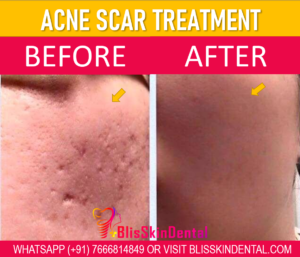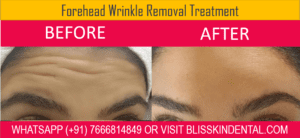Acne. This word can make many of us cringe, recalling painful memories of teenage breakouts or ongoing battles with our skin.
But what if I tell you that those pesky pimples might not be your fault at all? In fact, they could be the result of an internal imbalance that’s completely out of your control.
Hormones, those tiny chemical messengers in our bodies, play a huge role in our skin’s health.
They’re the puppet masters behind the scenes, pulling strings that can either lead to clear, glowing skin or frustrating breakouts.
Understanding this connection is crucial for anyone struggling with acne, especially if you’ve tried every face wash and spot treatment on the market with little success.
Let’s dive into the world of hormonal acne and uncover the truth about what’s really going on beneath your skin.
The Connection Between Hormones and Acne
Picture your skin as a delicate ecosystem. Now, imagine hormones as weather patterns sweeping through this ecosystem, sometimes bringing gentle rain (balanced skin) and other times causing stormy disruptions (acne breakouts). The main culprits in this hormonal storm are androgens, estrogen, and progesterone.
Androgens, often called “male hormones” (though everyone has them), are the primary troublemakers.
They stimulate our skin’s oil glands, leading to increased sebum production. While some oil is necessary for healthy skin, too much can clog pores and create the perfect breeding ground for acne-causing bacteria.
Estrogen, on the other hand, often plays a more positive role. It can help balance out the effects of androgens and improve skin’s overall appearance. However, fluctuations in estrogen levels can also trigger breakouts in some people.
Progesterone, which increases during the second half of the menstrual cycle and in pregnancy, can also contribute to acne by increasing skin inflammation and oil production.
These hormones don’t just affect oil production; they also influence how quickly our skin cells turn over. Rapid cell turnover can lead to more dead skin cells, which can mix with excess oil and clog pores, exacerbating acne issues.
Common Triggers for Hormonal Acne
Now that we understand the key players let’s look at the common triggers that can set off a hormonal acne storm:
- Menstrual cycle: Many women experience breakouts about a week before their period starts. This is due to the drop in estrogen and rise in progesterone that occurs during this time.
- Puberty: Remember those awkward teenage years? The surge of androgens during puberty is why acne is so common in adolescents.
- Pregnancy: Hormonal changes during pregnancy can lead to acne flare-ups, especially during the first trimester when hormone levels are rapidly changing.
- Menopause: As estrogen levels decline during menopause, some women may experience acne for the first time in years.
- Stress: When we’re stressed, our bodies produce more cortisol, which can throw other hormones out of balance and trigger breakouts.
Understanding these triggers can help you predict and potentially prevent acne flare-ups. But how can you tell if your acne is truly hormonal?
Identifying Hormonal Acne
Hormonal acne has some telltale signs that set it apart from other types of breakouts. If you’re dealing with hormonal acne, you might notice:
- Location: Hormonal acne typically appears on the lower third of the face – think chin, jawline, and around the mouth. You might also experience breakouts on your chest and back.
- Type of acne: Hormonal acne often presents as deep, painful cysts rather than surface-level whiteheads or blackheads.
- Timing: If you notice your breakouts follow a cyclical pattern, often coinciding with your menstrual cycle, that’s a strong indicator of hormonal involvement.
- Persistence: Hormonal acne can be stubborn, often resisting typical over-the-counter treatments.
Recognizing these patterns is the first step in addressing hormonal acne effectively. But what can you do about it?
Treatment Options
Dealing with hormonal acne can feel like an uphill battle, but don’t lose hope! There are several treatment options available, ranging from over-the-counter solutions to prescription medications and lifestyle changes.
Over-The-Counter Treatments
These are your first line of defense against hormonal acne:
- Topical retinoids: Derivatives of vitamin A, retinoids help unclog pores and promote cell turnover. Look for products containing adapalene or retinol.
- Benzoyl peroxide: This ingredient fights acne-causing bacteria and helps remove excess oil and dead skin cells.
- Salicylic acid: A beta-hydroxy acid that penetrates pores, salicylic acid helps exfoliate and reduce inflammation.
While these treatments can be effective for mild to moderate acne, more severe hormonal acne may require stronger interventions.
Prescription Medications
If over-the-counter treatments aren’t cutting it, it might be time to talk to a dermatologist about prescription options:
- Oral contraceptives: Birth control pills can help regulate hormone levels and reduce acne in many women.
- Anti-androgen drugs: Medications like spironolactone work by blocking the effects of androgens on the skin.
- Prescription-strength retinoids: Stronger versions of over-the-counter retinoids, these can be more effective at treating stubborn acne.
Natural Remedies and Lifestyle Changes
Don’t underestimate the power of lifestyle modifications in managing hormonal acne:
- Diet modifications: Some studies suggest that high-glycemic foods and dairy products may exacerbate acne. Consider keeping a food diary to identify potential triggers.
- Stress management: Incorporate stress-reducing activities like yoga, meditation, or regular exercise into your routine.
- Sleep hygiene: Aim for 7-9 hours of quality sleep each night to help balance your hormones.
Remember, what works for one person may not work for another. It’s all about finding the right combination of treatments for your unique skin.
When to Seek Professional Help
While it’s tempting to try to tackle hormonal acne on your own, there are times when professional help is necessary. Consider seeing a dermatologist if:
- Your acne is severe or cystic
- Over-the-counter treatments aren’t working
- Your acne is causing scarring
- Your breakouts are affecting your self-esteem and quality of life
A dermatologist can provide a thorough evaluation of your skin and hormonal health, and develop a personalized treatment plan that addresses the root cause of your acne.
Conclusion
Dealing with hormonal acne can be frustrating, but understanding the underlying causes and available treatment options is the first step towards clearer skin. Remember, there’s no one-size-fits-all solution when it comes to treating hormonal acne. What works for your best friend or favorite Instagram influencer might not work for you.
Be patient with your skin and with yourself. Hormonal changes and imbalances don’t happen overnight, and neither does healing. It may take several weeks or even months to see significant improvements in your skin.
Don’t be afraid to advocate for yourself and your skin health. If something isn’t working, speak up and explore other options. Your perfect skincare routine is out there – it might just take some time and experimentation to find it.
Remember, you’re not alone in this journey. Millions of people struggle with hormonal acne, and there’s a whole community of dermatologists, estheticians, and fellow acne warriors ready to support you. Stay positive, stay consistent, and most importantly, be kind to yourself and your skin. Clear, healthy skin is possible – and you deserve it.



